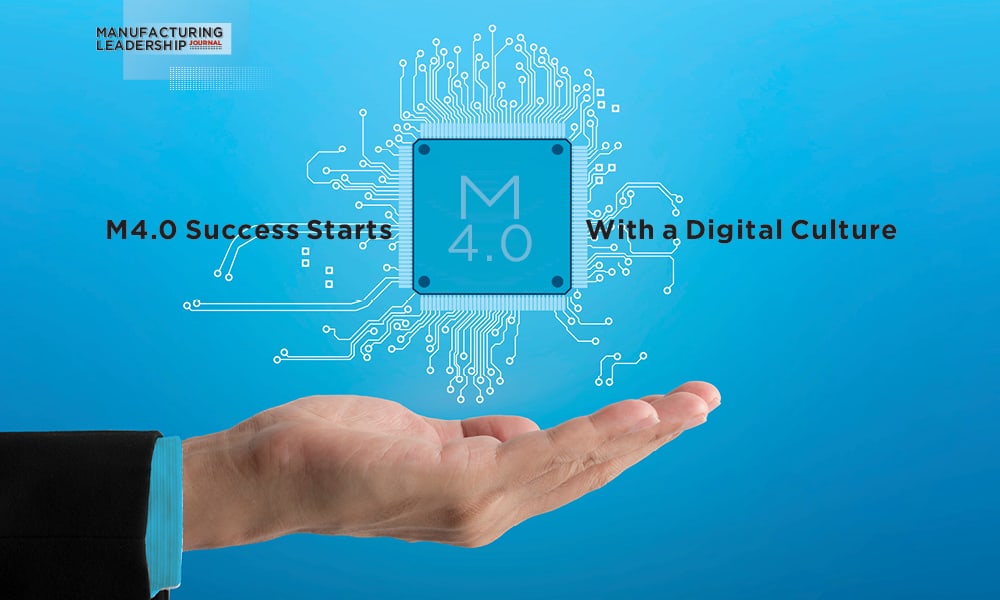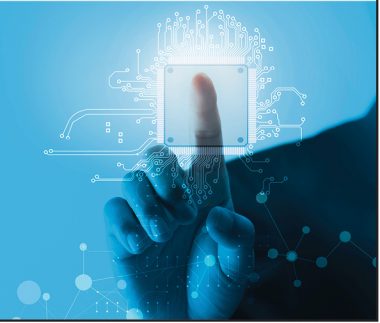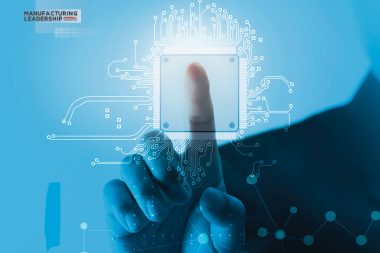
Getting the right technologies helps many companies improve, but success can only be maintained if the workforce has the digital acumen to support it. By Danny Smith
As the World Economic Forum outlined in a recent article, manufacturers need to have the right set of technologies in place to support workers’ interactions with new technology on the line – from digital workflows, to real-time analytics, to sensors and interfaces that connect workers to systems.1 What’s missing from this dream M4.0 tech stack, however, is a human capital management (HCM) system to serve as the foundation for workforce transformation. Building digital skills into the workforce at scale involves a series of interconnected activities – training, career development, performance, succession planning, engagement – that work best when they’re fueled by a single platform that supports the organization’s broader business goals.
Manufacturers not only need to prepare the workforce to maximize the ROI on new technologies right now, they also need to see what’s coming next and prepare for the future. The rapid evolution of technology is a moving target that requires continuous learning, tech-savvy leaders, and a highly collaborative workforce to keep pace with competition.
Simply put: if you want to build a truly digital culture, start with a foundational system of technology that can support today’s workforce and evolve alongside it in the future.
Embed Learning for a Greater ROI
Building a workforce with digital skills isn’t a one-and-done project. It’s not enough to simply identify the skills your organization needs today and set up a plan for people to acquire them. Approaching it this way will leave some manufacturers playing catch-up indefinitely. Re-skilling and upskilling the workforce must become business as usual, driven by a culture of learning that permeates the entire organization.
While many manufacturers use learning management systems to support workforce training and upskilling, the real value lies in how those systems are connected to other aspects of managing your workforce. Training is a considerable investment, so those efforts should ensure employees are continuously gaining skills that will propel the business forward, while meeting their individual career goals. This also supports retention – employees working for companies that offer resources for learning (from workshops to webinars to formal classes) are more likely to feel happier and stay longer than when those resources are not offered. 2
Instead of treating learning as a separate event that occurs outside of a normal day, manufacturers should embed learning into the natural workflow. A true, single-solution HCM platform allows organizations to incorporate learning throughout the employee lifecycle, beginning in onboarding. This can result in significant value to the organization, from increasing employee engagement, to shortening time to productivity, to reducing compliance risk. It can also improve operational operational efficiency by ensuring workers have the right skills for their roles, while reducing system sprawl and the administrative effort that goes with it.

Attracting younger workers means having self-serve tools and interfaces that are user-friendly, mobile-accessible, and seamlessly integrated.
Build Digital Acumen from the Top Down
Manufacturers seeking to build a digital culture need to start with their leaders. While it’s important for senior leaders to set the right tone culturally to ensure the organization is digitally minded, some the most significant benefits of digital transformation can be seen at the manager level. In one survey, 46% of manufacturers reported using spreadsheets exclusively for workforce management, yet 81% of those respondents said doing so makes it difficult to manage their work effectively.3
A great place to start is to encourage data-driven decision-making – not just on the line, but also in workforce management. While many manufacturers have been exploring ways to leverage data for more efficient production, highly strategic companies are using data pervasively across their organizations in a more holistic, integrated way. Advanced people analytics can help manufacturers solve a series of M4.0 workforce challenges. For example, data-driven labor planning has value beyond forecasting demand and planning equipment constraints; it can help organizations place the right number of workers with the right skills on the line at the right times for maximum productivity. Companies can also project and understand the effects of unplanned overtime and absenteeism on the bottom line, while identifying causes that can be addressed.
Another area where enhanced digital acumen can make managers more effective is scheduling. Managers spend a significant amount of time building schedules that balance organizational needs with employee and labor constraints. The trickle-down effect of removing this administrative burden is that managers will be able to focus their attention on training and coaching employees, while identifying opportunities to improve productivity.
Design a Digital Employee Experience to Attract Talent
When it comes to transforming the workforce to embrace technology, millennial and Gen Z talent are huge assets. The younger generations are primed to lead the digital transformation, as they’ve grown up with technology. They also inherently “get” the need to continuously build and expand their technology skills – more than half of millennials and Gen Z workers responding to a recent study said success in their careers depends on updating their skills and knowledge frequently, compared with 35% of Gen Xers and 34% of Baby Boomers.4
The issue for manufacturers is that they often struggle to demonstrate their relevance and appeal to millennial and Gen Z talent. According to a 2018 Leading2Lean survey, fewer than half of millennials believe manufacturing offers fulfilling careers.5 Their parents have influenced their views, as another survey found that fewer than three in 10 parents would consider guiding their child toward manufacturing.6

Instead of treating learning as a separate event that occurs outside of a normal day, manufacturers should embed learning into the natural workflow.
Manufacturers should consider buying into the trend toward ‘consumerizing’ the employee experience as a way to change the industry’s image among the younger generations. Increasingly, younger workers have come to expect the type of experience they have as consumers to extend to other areas of their lives – healthcare, learning, and even work. In fact, 56% of employees feel their employer should understand them as well as they are expected to understand their customers.7
Attracting younger workers means having self-serve tools and interfaces that are user-friendly, mobile-accessible, and seamlessly integrated, so employees won’t have to go through various tools and processes to make a request or complete an action. Younger workers want to be able to quickly request vacation time through their phone and get a response fast. They want to be able to connect and collaborate with their colleagues through digital forums and tools. And they want their opinions to be heard by management through pulse surveys and other communication channels.
This digital experience should start right from the recruitment stage, so candidates get a taste of the level of technological sophistication they can expect from your organization. Telling the right story as part of your employer branding efforts will also help to sell a vision of I4.0 to younger recruits – many will have a completely different impression of manufacturing in their mind and may be excited by the prospect of joining an industry that is rapidly transforming to be at the forefront of technology.
The right HCM platform will allow manufacturers to deliver on the expectations of younger workers without neglecting older workers who may be less open to change. For example, personalization is a key part of the employee experience within an HCM. Employees can access information relevant to their jobs and training in different formats and delivery mechanisms (e.g. mobile, web), and can be customized to their preferences and abilities. This helps ensure no one gets left behind and everyone can increase their digital acumen in a way that’s comfortable for them.
Focus on the Future Now
Staying competitive is all about agility. Manufacturers need to balance today’s business priorities with preparing for the next challenge on the horizon. We need to be able to bring products to market quickly and cost-effectively, while reacting to the market. To do that, the workforce must be much more comfortable with uncertainty and change. The ability for workers at every level, in every part of the business, to think creatively and adapt quickly to changes in market demand and consumer expectations is more important than ever.
To this end, manufacturers need to consider what kind of leaders will help drive their businesses forward in the future. Organizations can build a leadership team with solid digital acumen by identifying individuals with an interest in and aptitude for technology, innovation, and creative problem solving, and developing their skills through training and succession planning. These future leaders should be encouraged to stay on top of current trends and upskill regularly through subsidized courses and on-the-job learning. The ROI on those investments will be greater for organizations that have digital employee learning platforms and collaboration tools that allow technology evangelists to share their knowledge and skills with others across the organization. It’s even better if that technology connects learning and career development to performance and business goals.

To realize the full benefits of M4.0, adopting advanced technologies on the line and training the workforce to use them isn’t the end of the story.
Manufacturers will also need to become more forward-thinking to build and retain the right workforce. We’ll need to streamline recruitment and hiring processes to allow HR teams to focus on strategies for the future. Data needs to play a bigger role in hiring, as we seek out individuals who can fill skill gaps and contribute in a collaborative, team-oriented environment. Predictive analytics can help managers track top performers and identify when they become flight risks, creating opportunities to adapt the employee experience in real time to keep the best people from leaving. HCM technology can be used to build virtual talent pools that capture promising candidates, as well as to keep track of existing workers with the skills, interest, and aptitude to move up the ladder or contribute in new roles as they emerge.
Takeaways for Building a Digital Culture
Embed training into the natural workflow. Build a culture of continuous learning by reframing what training means for your organization. Find opportunities to upskill and reskill employees on the job, through technology, in a way that’s personalized to their unique needs and capabilities. Focus on learning as a key recruitment and retention tool for millennials and Gen Z talent.
Develop digital leaders to set the culture. Prepare the next generation of leaders to galvanize the workforce around technology and model what it means to be truly digital. Encourage data-driven decision making both on the line and for more precise workforce management. Empower managers with technology that can help them save time on administrative work and focus on driving a digital culture, upskilling, and collaboration.
Use data to build a tech savvy workforce. Understand your workforce through access to the right data. Identify the people your organization needs now – and tomorrow – and recruit more strategically. Monitor employee engagement through pulse surveys and take action to keep your top performers longer. Leverage learning platforms to encourage the workforce to develop their digital acumen.
Personalize the employee experience. Create a digital employee experience that meets the needs of a multi-generational workforce, including self-serve tools, learning methods, onboarding, and collaboration. Empower employees to take control of their own career development, while working toward a common goal grounded in the needs of the business.
Prepare for tomorrow today. Streamline and automate processes to free up time for more strategic, future-focused work. Eliminate administrative debt for managers and HR teams, allowing them more time to guide the workforce through digital transformation. Build a more agile workforce to react to market changes and stay ahead of the competition.
Amid seismic change, it’s easy for manufacturers to focus on the here and now. But to realize the full benefits of M4.0, adopting advanced technologies on the line and training the workforce to use them isn’t the end of the story. More change is always on the horizon, technologies are constantly evolving, and the workforce is more important than ever before. Investing in a modern HCM platform will help you build an agile workforce that can keep pace with change – and that will increase the return on every other technology investment you’ve made. M
1 Digital technology helped create the skills gap. Here’s how it can help close it. (World Economic Forum)
2 Ceridian’s 2019 Pulse of Talent Report (Ceridian)
3 The State of Workforce Management (Ventana Research)
4 Gen Zers and Millennials More Likely Than Older Generations to Embrace Continuous Learning (getAbstract)
5 L2L Manufacturing Index (Leading2Lean)
6 A Look Ahead: How Modern Manufacturers Can Create Positive Perceptions with the US Public (Deloitte/NAM)
7 Consumerizing the Employee Experience (Ceridian)
